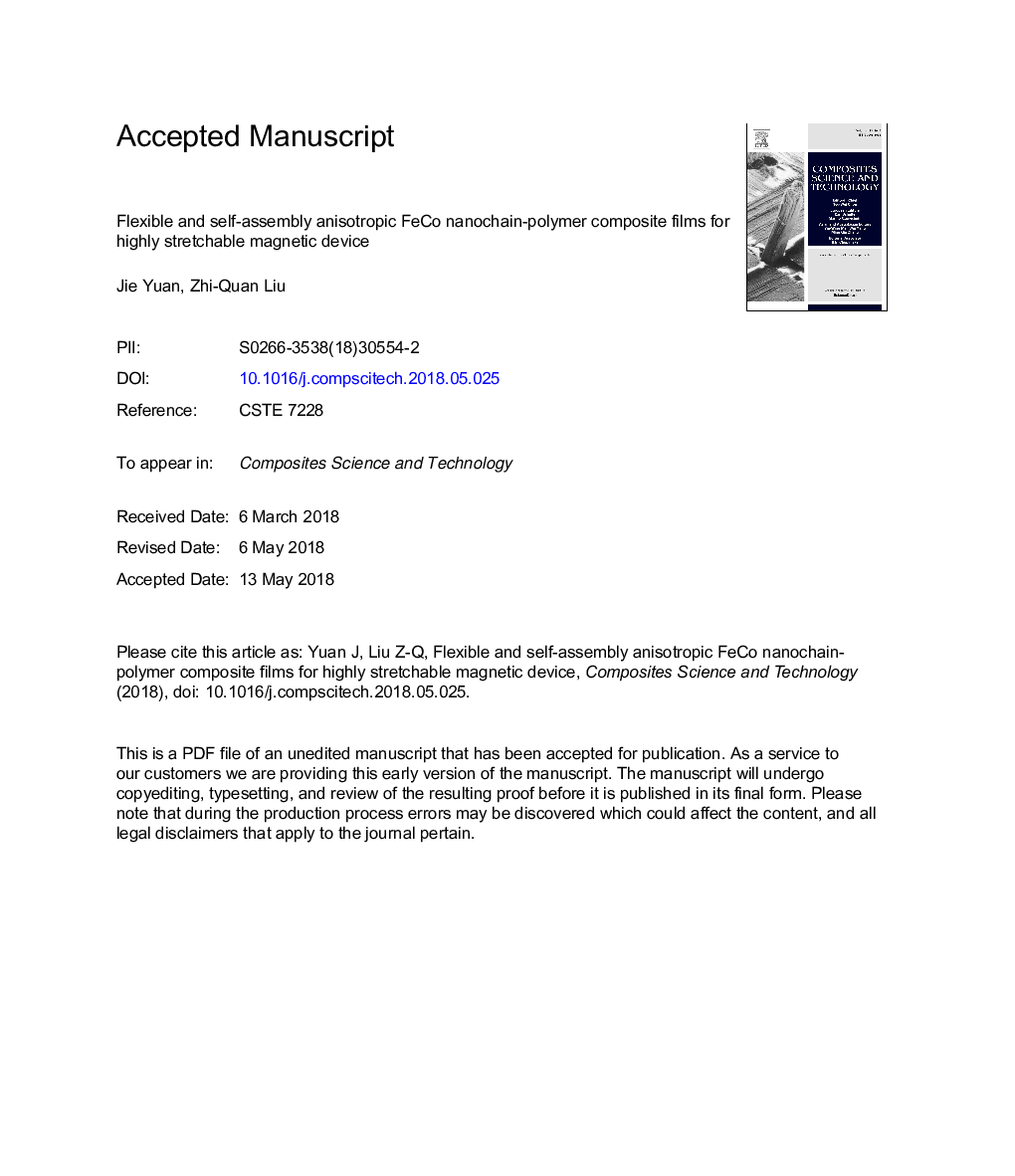| Article ID | Journal | Published Year | Pages | File Type |
|---|---|---|---|---|
| 7214187 | Composites Science and Technology | 2018 | 31 Pages |
Abstract
Magnetic field induced self-assembly is used to successfully fabricate flexible and anisotropic FeCo nanochain-PDMS composite films. The embedded nanochains are controllable in average length (<200â¯Î¼m) and width (<2â¯Î¼m) through optimizing the filler mass fraction and the magnetic field intensity, and an ultra-high aspect ratio of 150 can be achieved. In-situ observations on the growth of a 600â¯Î¼m long nanochain verify the connection and coarsening mechanism. The composite films are anisotropic along the directions parallel or perpendicular to the alined nanochains or nanobundles. The highest tensile strength in the tension direction perpendicular to the nanochains is 3.20â¯MPa for the composite film fabricated at 60â¯mT with 1.0â¯wt% of filler, which is 85.0% higher than that of the pure PDMS films (1.73â¯MPa). Different tensile models are proposed to discuss the fracture mechanism, concerning the effectiveness of stress transfer between soft matrix and filler. VSM measurements indicate that the nanochains are easier to be magnetized in parallel geometry due to the larger dipolar coupling. The saturated magnetization (Ms) of nanocomposite films with 1.0â¯wt% FeCo nanocube filler is 0.45 emu gâ1. Such highly flexible, magnetically responsive anisotropic composite films have potential applications especially for highly stretchable devices.
Related Topics
Physical Sciences and Engineering
Engineering
Engineering (General)
Authors
Jie Yuan, Zhi-Quan Liu,
